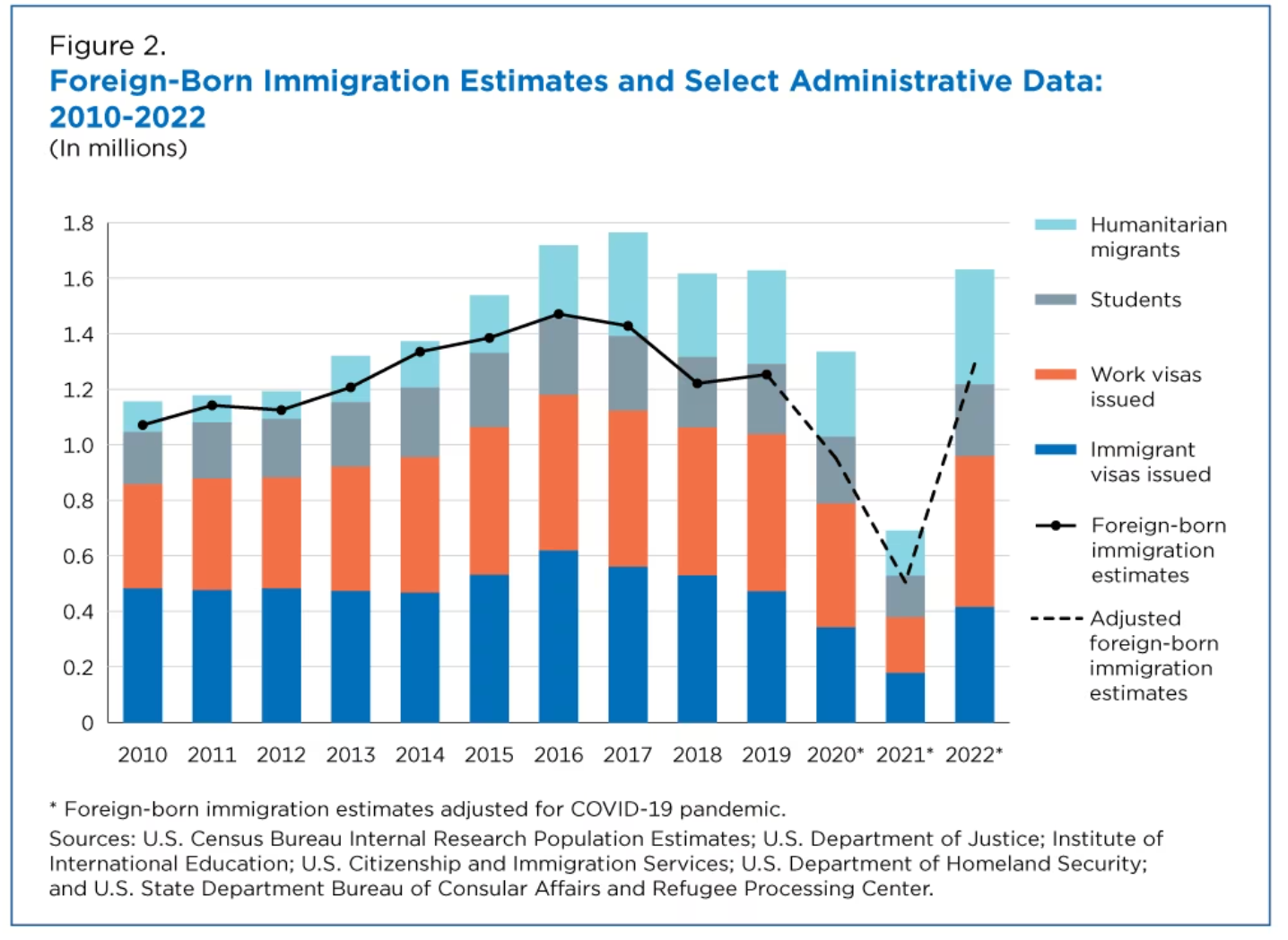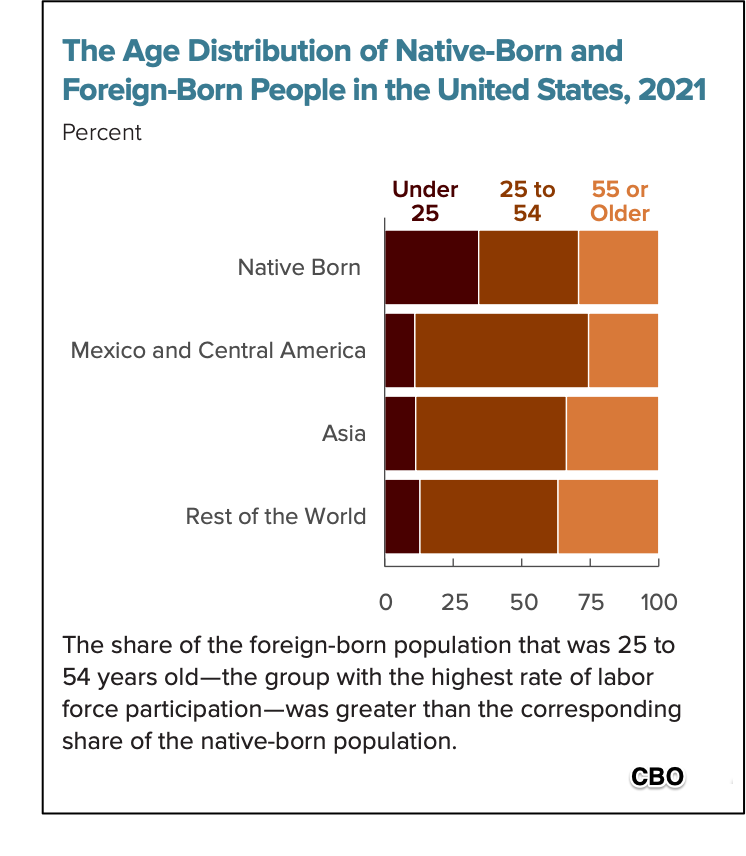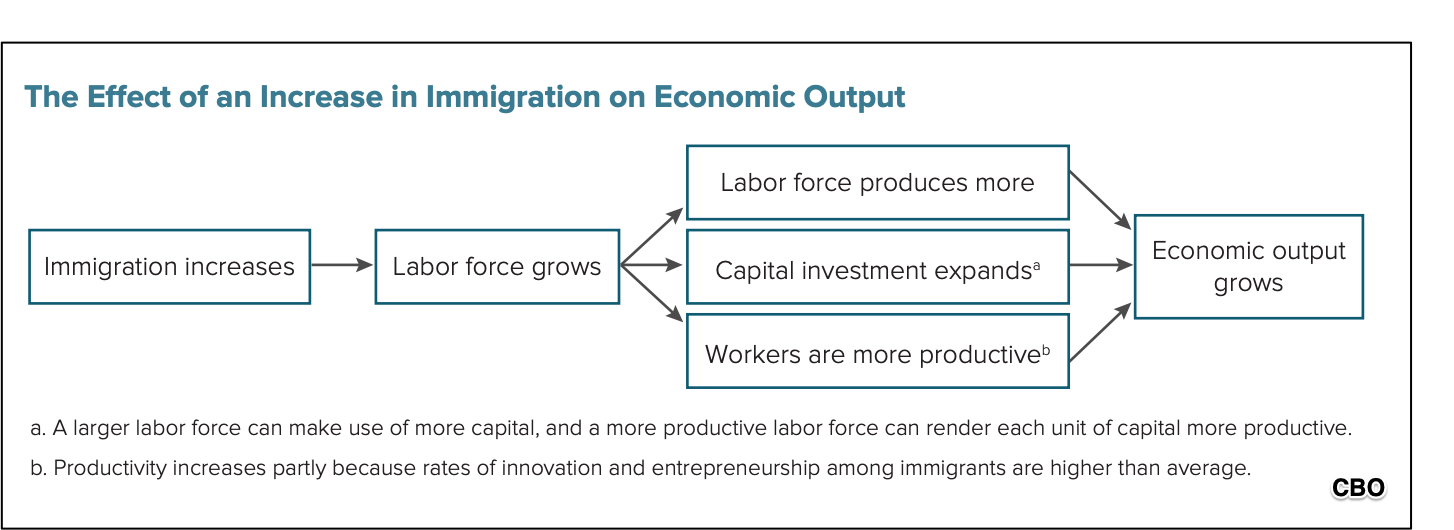Like the U.K., the U.S. has also seen a post-Covid pop in immigration. In a total population of approximately 332 million, the U.S. is home to 44.7 million people that were not born here.
Six Facts: The U.S. Foreign-Born Population
1. Why are people here?
Between 2021 and 2022 immigration rebounded from a Covid-19 slump. During 2022, migration added more than one million people to the population.
You can see that the largest numbers of immigrants are here to work and to study:
2. Where did immigrants come from?
Dominated by Mexico, Central America, and Asia, the U.S. immigrant population has many fewer people from Africa and Europe:
3. How old are foreign-born people in the United States?
Whereas the age distribution of people born in the U.S. is pretty equal, for immigrants, it’s 25 to 54:
4. Where do immigrants work?
Shown by the scale under the graph, more immigrants have lower wages. However, as we saw in a recent econlife post, as entrepreneurs, immigrants tend also to be job creators and innovators:
5. How do immigrants impact the economy?
Immigrants are an economic asset:
6. How do immigrants affect the federal budget?
Foreign born individual pay taxes and have access to federal programs.
Simplifying considerable data, the CBO summarized the tax situation.”

The CBO also had a summary of the foreign-born population with access to federal programs:
Our Bottom Line: Human Capital
Our six facts all add up to human capital.
As one of three factors of production, capital is physical and human. We all are familiar with the buildings and tools and inventories that compose our physical capital. Harder to see, our human capital also fills a “structure.” However, that container is you and me. And, just like we can increase productivity when we add to our physical capital, the same is true for adding to the knowledge that composes our human capital.
Our facts on immigrants display the human capital they bring to their new homes.
My sources and more: In addition to the NBER paper we looked at last week, Pew and Axios had more. Predictably, the Census Bureau was also helpful. However, when I discovered this CBO study, I was elated.











